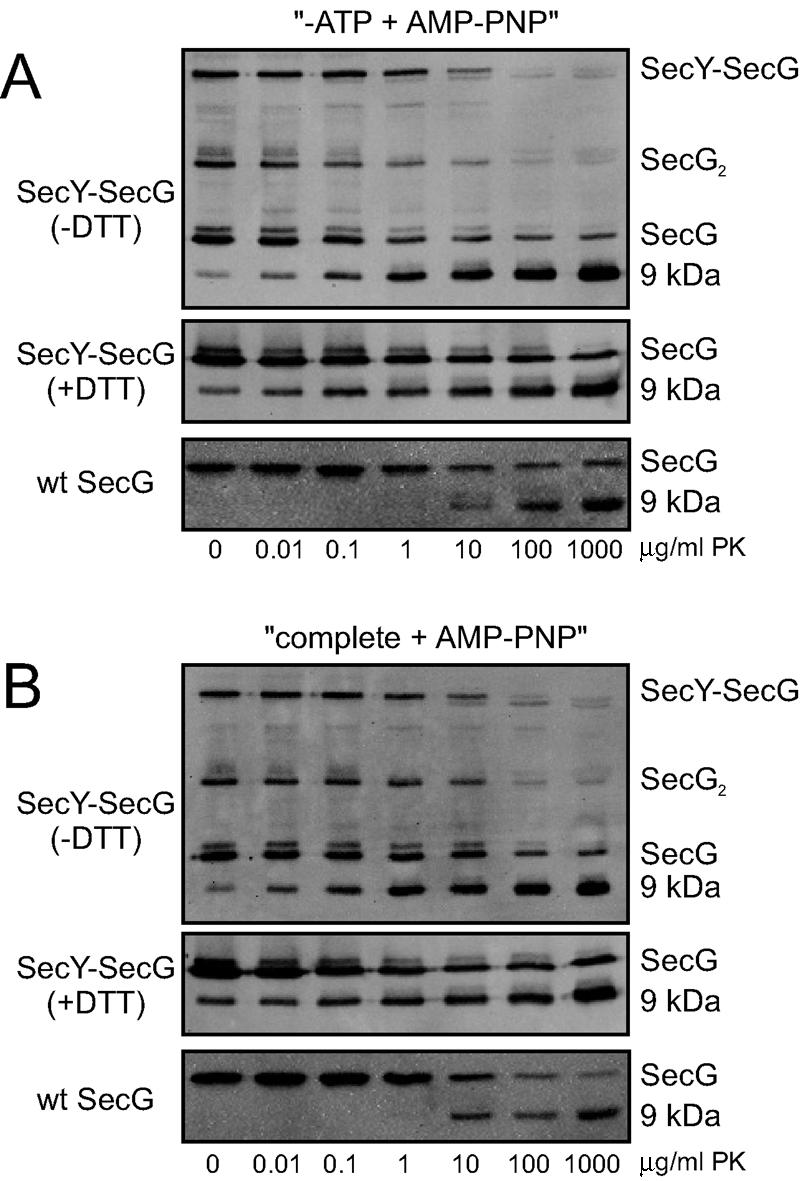FIG. 2.

SecG cross-linked to SecY does not invert its membrane topology. Oxidized IMVs overexpressing SecY(T179C)EG(K26C) (panels 1 and 2) or wild-type SF100 IMVs (panels 3) were subjected to the SecG topology inversion assay (A: −ATP plus AMP-PNP; B: complete plus AMP-PNP; see text for details) as described before (18) under nonreducing conditions. Samples were analyzed by nonreducing (panels 1) or reducing sodium dodecyl sulfate-polyacrylamide gel electrophoresis (panels 2 and 3) followed by immunodetection with antibodies raised against the extreme C terminus of SecG (17). Bands corresponding to the SecY-SecG cross-link product, SecG, dimeric SecG (SecG2), and the 9-kDa C-terminal fragment of SecG, are indicated. The applied concentrations of proteinase K (PK) are indicated at the bottom of each panel. Note that a small amount of the 9-kDa fragment is always observed upon overexpression of SecG (18).
